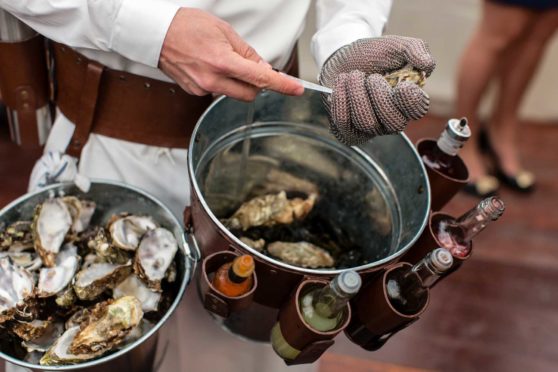
Scotland produces some of the finest seafood in Europe and oysters are no exception.
However, they have developed a reputation for being both expensive and difficult to prepare.
To celebrate Seafood Week, Scotland’s only ‘Oysterman’, Ferran Seguer, gives his tips on how to prepare oysters to encourage people to cook and eat more seafood at home.
Where do I buy them from?
You’re always going to get the best oysters if you’re near the coast. Local is best; go to your town’s fishmonger, they get regular, fresh supplies at a good price. Oysters need to be alive when you buy them so make sure they’re tightly closed and they should smell of the sea, not fishy.
What tools do we need to Shuck Oysters?
All you need is an oyster knife, also called a shucking knife. They vary in sizes and shapes but whatever you can get your hands on will do just fine. Amazon do some great ones for a good price, such as this one but most fishmongers sell them too – so you can pick one up at the same time as your oysters. You’ll also need a big tea towel to protect the hand holding the oyster. That’s it!
How to shuck
Step One
Wrap your non-dominant hand in the tea towel and use this hand of hold your oyster. Hold the oyster tight, with the round side down and the hinge pointing to you. Put the point of the knife into the hinge. Give the oyster a ‘wee shuggle’ and push the knife gently into the hinge until the knife is fully stuck in the hinge.
Step Two
Turn the knife gently left and right, like turning as key in a lock. Make sure you keep the oyster tight in your hand and keep pressure on the knife. If the oyster doesn’t crack open, push the knife a bit deeper and continue turning the knife both left and right.
Step Three
To open the shell, you need to cut the muscles that hold the two sides together. Oysters have two muscles, one on either side of the shell; the top and bottom muscles. From the hinge they are two thirds of the way up and slightly to the right.
To cut these, push the knife into the hinge, keeping the point of the knife against the top shell. Feel where the muscle is (around two thirds of the way up and to the right slightly) and scrape the knife to the right to cut the muscle.
Scoop the knife underneath the oyster and you’ll find the bottom muscle, mirroring the position of the top muscle. Scrape the knife against the shell to cut the muscle. You should now be able to open your oyster.
Step Four
Cleaning & presentation: push the oyster out of the hinge and tidy up any debris with the knife.
To serve
Keep it simple and prepare a tray with lots of crushed ice and lemon.
To accompany
There is an infinity of sauces that people enjoy with oysters, from red wine shallot vinaigrette, to the classic – lemon juice, pepper and tabasco. There is also a whole range of distilled alcohol that you can pair with oysters – such as Old Pulteney single malt whisky.
As the ‘Maritime Malt’, the whisky offers briny coastal notes, making it an oyster’s perfect partner. Of course, there’s also always the option to serve “au naturel”, with only the sea as seasoning.
Whatever you use, my recommendation would be to use as little as possible so you can still enjoy the flavour of the oyster. This is important when it comes to whiskies – with such a strong flavour, you need to ensure it doesn’t overpower the oyster itself. I would recommend using a small spray bottle and adding 1-2 sprays.
I have been using a range of different whiskies over the last few years, however I have recently been favouring Huddart single malt whisky from Old Pulteney. The light peatiness works so well with the oysters – providing a hint of smoke without masking the flavour, and the salty notes in the whisky complement the fresh taste of the sea – a perfect combination.
Something I often experience when working an event – people who don’t like oysters due to the texture. There is often the perception that oysters are ‘spoiled’ if they are cooked, but there are so many gorgeous ways to cook them without losing that sea-freshness.
Personally, I love them grilled for about 5-8 minutes with some parmesan, bacon and bread-crumbs.
Find out more about Seafood week at https://www.fishisthedish.co.uk/seafoodweek

Enjoy the convenience of having The Sunday Post delivered as a digital ePaper straight to your smartphone, tablet or computer.
Subscribe for only £5.49 a month and enjoy all the benefits of the printed paper as a digital replica.
Subscribe